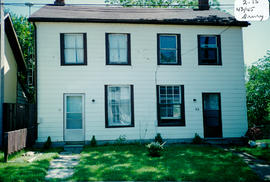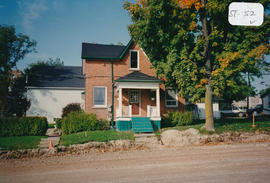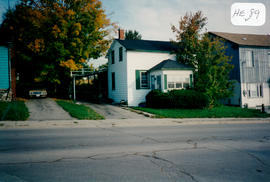- CA BWGPL GJ-HB-2017-03-29-02
- Item
- 1995
Part of George Jackson fonds
This two-storey, solid-brick building is located on the north side at 37 Holland St. West (on the corner of Holland and Moore Streets). It has been the site of several businesses, including Western Tire, Municipal Savings and Loan, and a grocery store. Originally, it was the Kilkenny Furniture Store. Frank Kilkenny, his father, and Keith lived here. The front part of the building was a furniture display and show room. There were stairs on the west side leading up to the show room. It was later turned into a funeral parlor when funerals ceased to be held in the deceased’s home. In the early 1930’s, Len and Art Saint built an addition on the back. The back part was used as an embalming room and for casket storage. It had two car bays. There was an elevator in the back part that provided access to the second floor. After Frank died, Keith remained an undertaker for only a short time. He preferred to work with refrigerators, furniture, freezers and radios. There was an office off Lovers Lane (Moore St.) that later became the location of Keith’s radio repair shop. Tom Kilkenny, an undertaker and furniture maker, later ran his business here. He employed a number of men. Behind the brick building was a two-storey, frame building used for storing cutters, sleighs, furniture, and the other things used in the business. There was also a small garden. Neal Lathangue eventually took over the funeral business. (1, 2)
George Jackson






